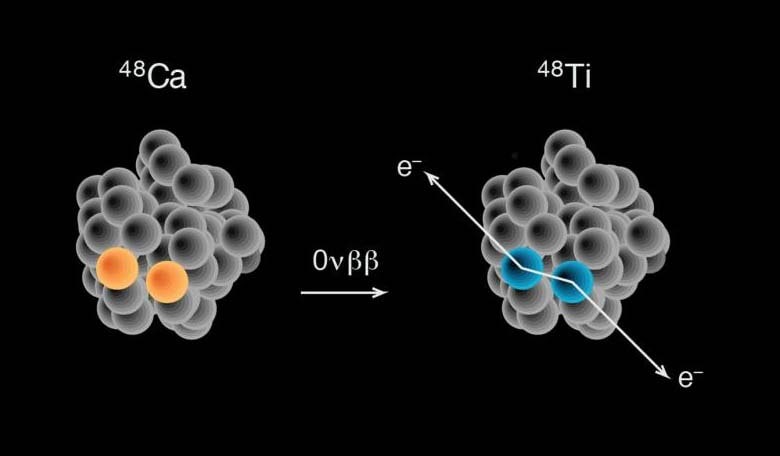Since its discovery over 60 years ago, the neutrino has held a long fascination with scientists due to its importance in astrophysical processes, however despite being produced in extremely abundant quantities – from the Sun alone, calculations suggest that several tens of billions of solar neutrinos traverse a square centimetre of the earth each second – little is known about their fundamental properties, such as their mass (only the upper limit is known), or whether neutrinos and antineutrinos are in fact the same particle.
Now, using one of the world's most powerful computers – the K-computer at Kobe's RIKEN Institute – researchers from the University of Tokyo, in collaboration with a Spanish physicist, aim to solve these mysteries by analysing a special decay of calcium-48, whose life, which lasts trillions of years, depends on the unknown mass of neutrinos.
Neutrinos are subatomic particles produced by the decay of radioactive elements and are elementary particles that lack an electric charge. Unlike photons or charged particles, neutrinos can travel across the universe (at essentially the speed of light) without interference as they are not absorbed by intervening matter or deflected by interstellar magnetic fields.
This makes them ideal candidates in which to study processes that can otherwise not be observed, such as cataclysmic high-energy processes deep inside stars. The down side to this, is that these very same attributes make cosmic neutrinos extremely difficult to detect and in order to study them, instruments usually located deep underground are required to find them in sufficient numbers to analyse them.
Now a different type of experiment involving the so-called neutrinoless double beta decay, will hopefully shed some light on these elusive particles. One example of this is the decay of calcium-48 (a very rare isotope of calcium with 20 protons and 28 neutrons) into titanium-48 and it occurs when an atom's parent nucleus decays into a daughter nucleus, gaining two protons, losing two neutrons and emitting two electrons.
"The half-life of this decay depends on two factors: the unknown mass of neutrinos (which are part of the process, even though none are emitted) and the characteristics of the parent and daughter nuclei. This implies that, knowing these nuclear characteristics, and once this decay has been measured experimentally in one of the underground laboratories working on it, it will be possible to determine the mass of neutrinos," said Javier Menéndez, a Spanish researcher at the Japanese university and one of the study's co-authors who have analysed and modelled this process in unprecedented detail.
Although several international collaborations are running experiments to independently measure this process, it was the teams improved calculation of the nuclear matrix element for calcium-48 through extremely complex quantum mechanics calculations, that have enabled the team to conduct this research.
"Our findings will make it possible to directly obtain neutrino mass when the half-life of this decay is measured experimentally," says Menéndez. "Moreover, they suggest that the decay of calcium-48 is around half as long as what was previously thought (2 x 10^(25) years, rather than 4 x 10^(25) years). This improves our chances of observing it."
Finding the neutrino mass is one thing, but the research has further far-reaching implications. "The most interesting thing would be to confirm that neutrinos are not emitted during double-beta decay, as that would imply by physical principles that neutrinos and antineutrinos are the same particle; that would be a massive discovery, a Nobel prize for sure," stresses Menéndez. "If that happened, we could say that neutrinos are Majorana particles, because they would be particle and antiparticle at the same time.”
A Majorana particle, is a fermion that is its own antiparticle and they were hypothesised by Ettore Majorana in the 1930s. If the experiments did lead to this discovery, then it would be the first known case of matter that is simultaneously antimatter. Additionally, it would generate an asymmetry that would serve to explain why there is no antimatter in the universe. Majorana neutrinos would have allowed for the creation of more matter than antimatter in the first moments after the Big Bang.
After presenting their findings with calcium-48, the researchers are now working on similar calculations for the neutrinoless double beta decay of germanium-76, selenium-82 and even xenon-136. Experiments on this latter xenon isotope is the subject of NEXT, a Spanish project led by the Corpuscular Physics Institute (CSIC-University of Valencia), which is attempting to demonstrate in the Canfranc Underground Laboratory (Huesca) that the neutrino is its own antiparticle.











